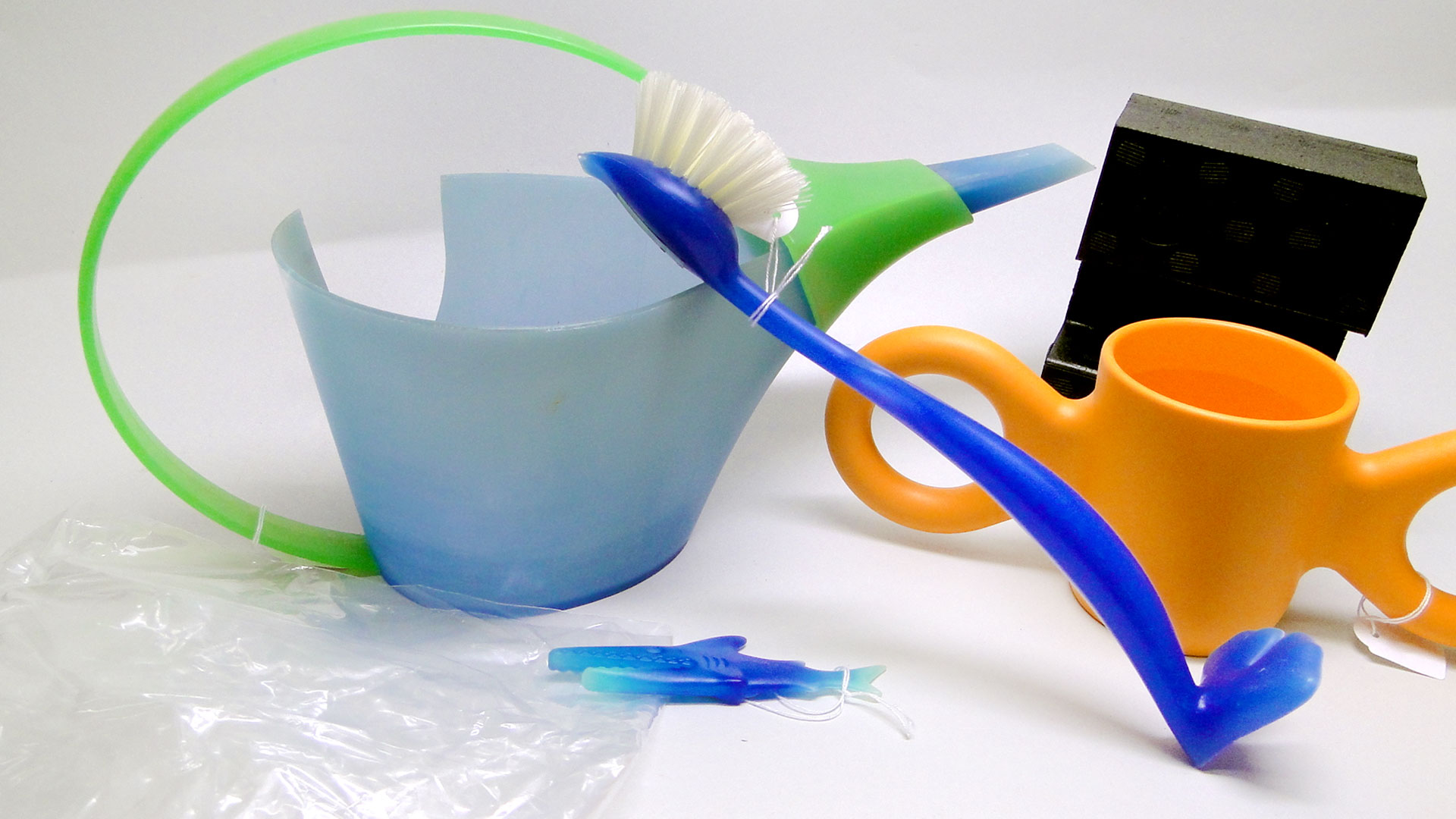Plastics
Polypropylene (PP)
General information
Description
Polypropylene (also polypropene) is a much used, inexpensive plastic. It is a thermoplastic and, just like polyethylene, a polyolefin (a polymer containing only carbon and hydrogen atoms with a formula CnH2n). The material is chemically related to PE and used in similar applications. PP is often somewhat harder than PE. Thick PP can be more transparent than PE of the same thickness. PP can be obtained opaque in many colours. PP feels less waxy than PE and does not produce the typical PE 'old Tupperware/old plastic bags' smell upon ageing. Like PE it is difficult to print or paint PP as the medium does not attach well to the surface. PP is the only plastic that can be used to manufacture living hinges (such as in flip-top bottles). If an object contains such a hinge it can only be PP.History
PP was first synthesised in the laboratory in 1951. In 1957 industrial production started.Production, Application, Appearance
PP exists in many forms, as sheet, film, and foam. Production is simple, it can be coloured in any colour desired and moulded into shape. It is an inexpensive and versatile material with a wide range of applications. It is used for packaging, wrapping film, food containers, bottles, automotive parts, rope, and everyday products such as kitchenware, domestic items, furniture, and toys. It can be reinforced with glass fibre (especially in the USA).Properties
Material properties
ThermoplasticDensity: 0.84-0.91 g/cm3; foam: g/cm3
Melting point: 120-176°C
Glass transition temperature: calc = -15°C; exp = -8°C
Identification properties
Cell structure (foam): little spheresSmell: no characteritic smell
Touch: no characteristic touch
Sound: Rigid = not clear; foam = no characteristic sound; film = no characteristic sound
UV-radiation (when clear): fluoresces blue clearly
Polarizing filters (for clear CE): produces a bright colour
Degradation
Process
Photo-oxidation. Loss of mechanical strength below 0°C.Details
Not considered a problem plastic.Symptoms
Discolouration, loss of mechanical properties resulting in tears and fractures, material gets brittle.Susceptibility
UV-radiation: HighLight: Medium
Oxygen/Ozone: Medium
Temp: High - below 0°C PP becomes brittle
RH: Low
Preventive conservation
Recommendations
UV-RADIATION: keep below 10 µW/lm Exclude UV with filters or no-UV light sourceLIGHT: 1 slight change in approx. 30 Mlx.h Moderate light dose - control intensity and exposure time
OXYGEN / OZONE lower temperature slows down oxidation
TEMP: do not keep below 0°C
RH: common indoor conditions 30-70% RH fluctuations: setpoint ±20%
Other names
- Achieve
- Polypropeen
Am I dealing with...
TAGS
- Closed cell structure
- Hard
- Ball structure



